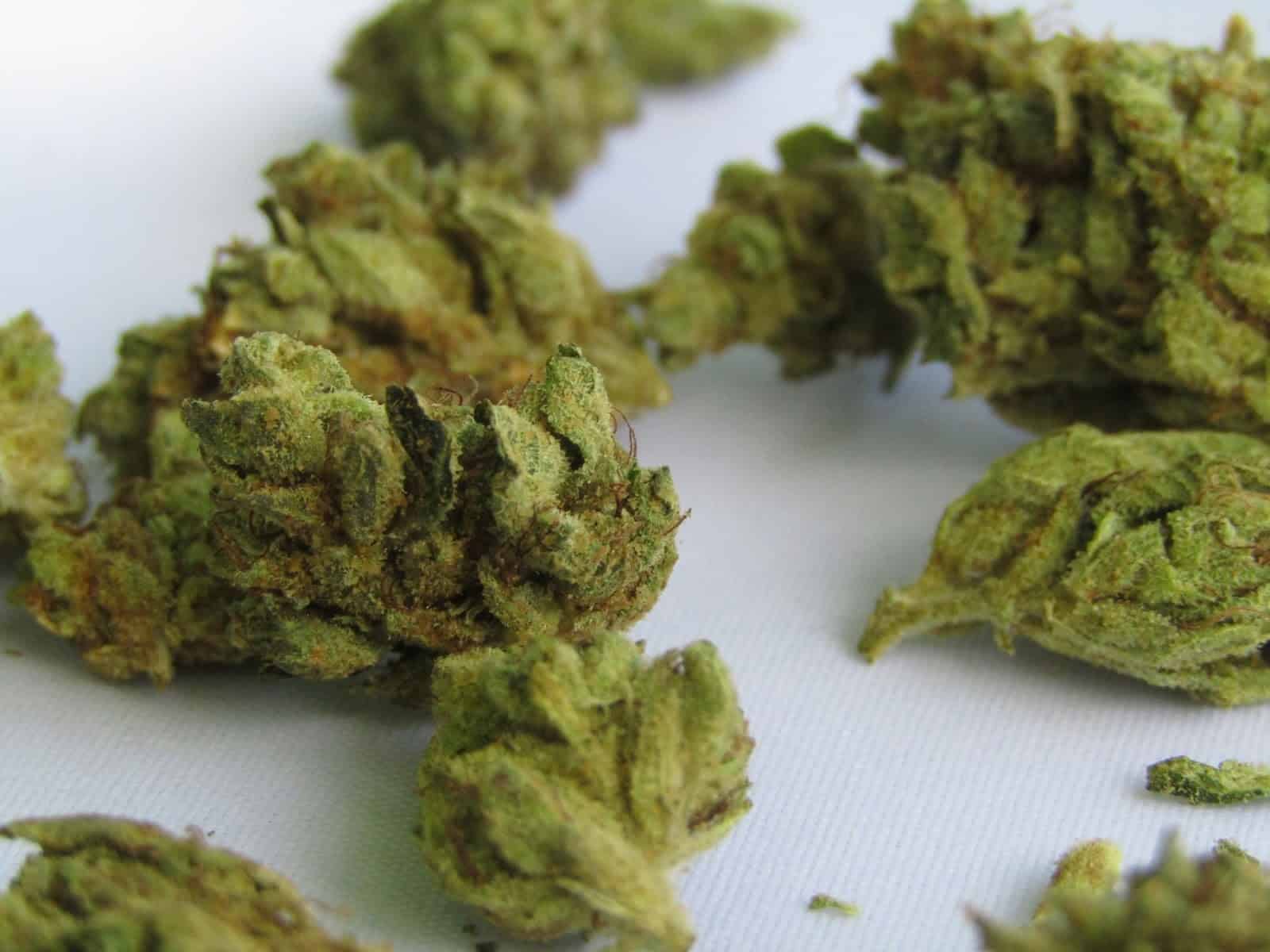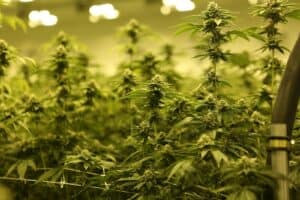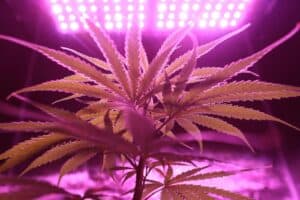Maximizing the yield of your cannabis plants while keeping them healthy is achievable with low stress training (LST). This effective technique involves carefully bending and tying down stems to guide plant growth without causing significant stress. Unlike high-stress methods, LST encourages your plants to develop multiple buds while avoiding potential harm. Here’s a comprehensive guide to help you master this method and elevate your cannabis cultivation results.
Key Takeaways
- LST is a method to shape cannabis plants and improve light exposure.
- It effectively boosts yields without overly stressing the plant.
- This technique is versatile and works for both indoor and outdoor cultivation setups.
What Is Cannabis LST?

Low stress training, or LST, is a cultivation technique designed to help growers control how their cannabis plants grow. By bending and tying stems, the plant canopy becomes more even, improving light penetration and airflow while maximizing bud sites. The simplicity and effectiveness of LST make it popular among both novice and experienced growers.
Why Choose LST Over High-Stress Techniques?
High-stress methods like topping or super cropping involve cutting or breaking parts of the plant, which can lead to stunted growth if done incorrectly. In contrast, LST lets you:
- Shape your plants gently without causing damage.
- Reduce recovery times while promoting steady growth.
For growers new to plant training or working with stress-sensitive strains, LST is an excellent way to achieve healthier, more productive plants. Additionally, LST allows you to correct uneven growth patterns, ensuring all branches receive an equal share of light and nutrients.
Key Benefits of LST
- Higher Yields: It encourages more bud sites to form by ensuring even growth.
- Improved Light Efficiency: Each part of the plant receives sufficient light.
- Space Optimization: LST helps you manage plants in small spaces effectively.
The method works well in various setups and helps prevent issues like mold or poor airflow in densely packed grow areas. By adopting LST, you ensure your plants stay healthy and productive. LST also helps you achieve a more aesthetically pleasing canopy, which is vital for maximizing the amount of light that reaches every part of the plant. This training technique also encourages better apical dominance control, ensuring that buds along the top of the plant and lower branches receive equal energy for growth.
How Can You Effectively Start LST on Cannabis Plants?
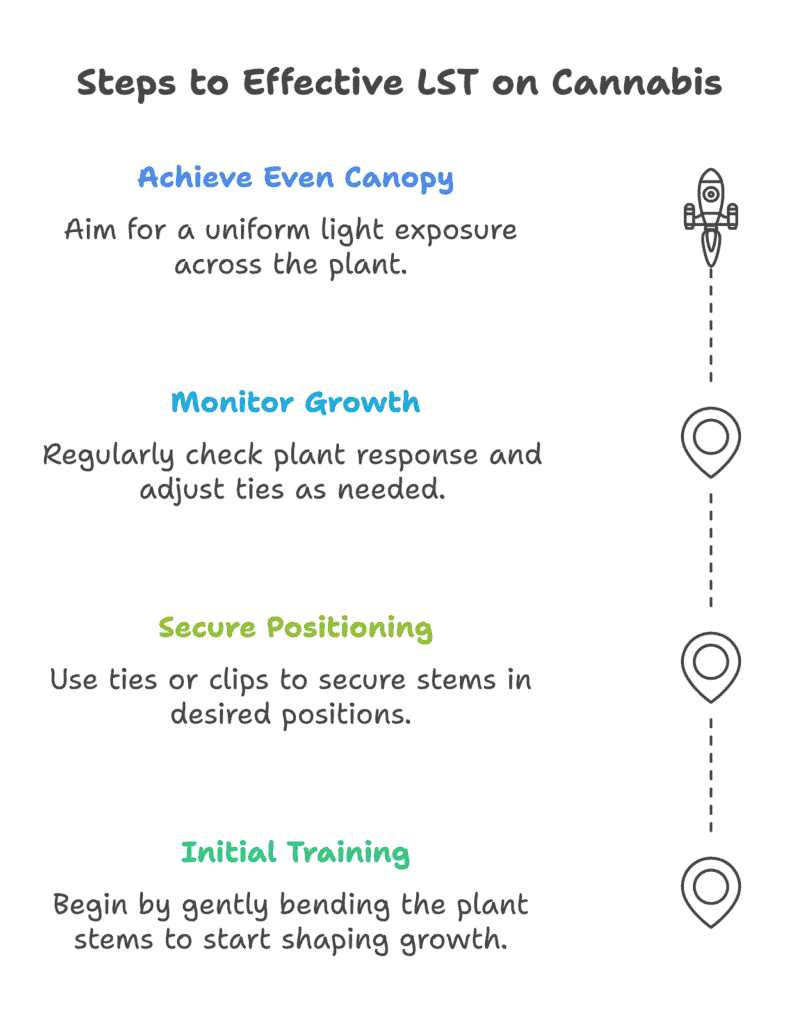
Getting started with LST is straightforward. The best time to begin is during the vegetative stage when plant stems are pliable and easier to shape. With a few tools and some patience, you can train your plants to grow as desired.
A Step-by-Step Guide to Low Stress Training
- Gather Your Tools: Use plant ties, soft wires, or training clips to secure the stems.
- Identify Key Growth Points: Locate the plant’s main stem and any prominent side branches.
- Bend the Stems: Carefully bend the stem downward to expose lower nodes to light.
- Secure with Ties: Anchor the bent stems using soft ties or clips without damaging them.
- Monitor Growth Regularly: Adjust ties and guides as the plant grows to maintain the desired shape.
- Repeat the Process: As your plant grows, continue bending and tying to shape its structure further.
Tips for Successful LST
- Be gentle when bending stems to prevent snapping.
- Start early in the vegetative stage for maximum effectiveness.
- Use flexible materials that won’t cut into the plant.
Whether you’re cultivating photoperiod strains or autoflowering varieties, LST adapts well to different growth cycles. It ensures even nutrient distribution and creates a balanced plant structure, which is crucial for achieving high yields. LST is especially helpful if you’re growing in an environment with limited vertical space, as it keeps your plants low and manageable.
Why Is Timing Crucial for Successful Cannabis Lst( Low Stress Training)?
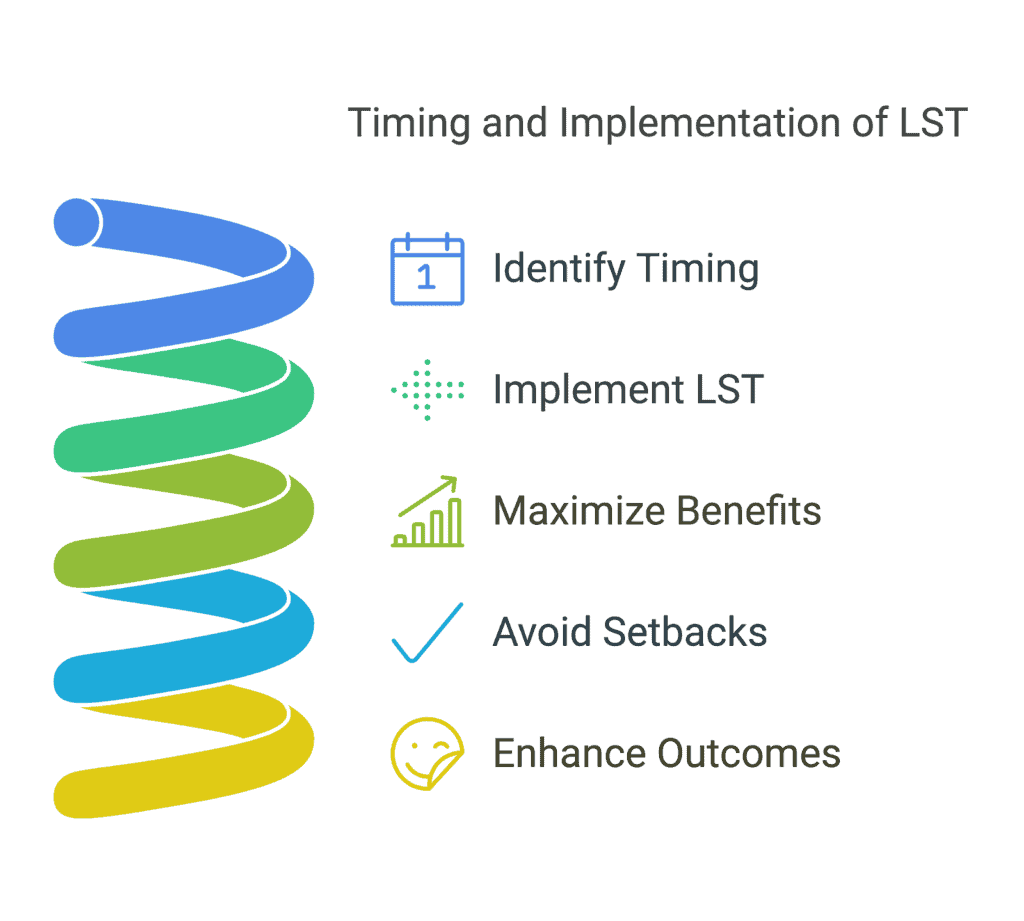
Timing is critical for successful LST. Ideally, you should start early in the vegetative stage when your plants are actively growing. This is when the stems are most flexible, allowing for easier manipulation.
What are the Best Times for Cannabis LST(Low Stress Training)?
- Vegetative Phase: Begin when your plants have developed 4-6 nodes for optimal results.
- Avoid Late Flowering: Heavy training during the flowering stage can stress plants and reduce yields.
For autoflowering cannabis, it’s essential to act quickly due to their shorter growth cycle. By starting early, you maximize their limited vegetative period and set the stage for healthy flowering. Proper timing ensures you can shape your plants effectively without interrupting their natural growth cycle.
Adapting LST to Indoor and Outdoor Growing
Indoor growers benefit from LST by optimizing light distribution in confined spaces. Outdoor growers can use LST to manage plant height discreetly and improve airflow in densely planted areas. Regardless of your setup, LST provides a low-risk way to boost your harvest. Moreover, outdoor growers can use LST to make the most of natural sunlight by ensuring all parts of the plant are equally exposed. This method also results in larger colas, as the redistribution of energy promotes balanced growth across the canopy.
Why Incorporate LST into Your Cannabis Routine?
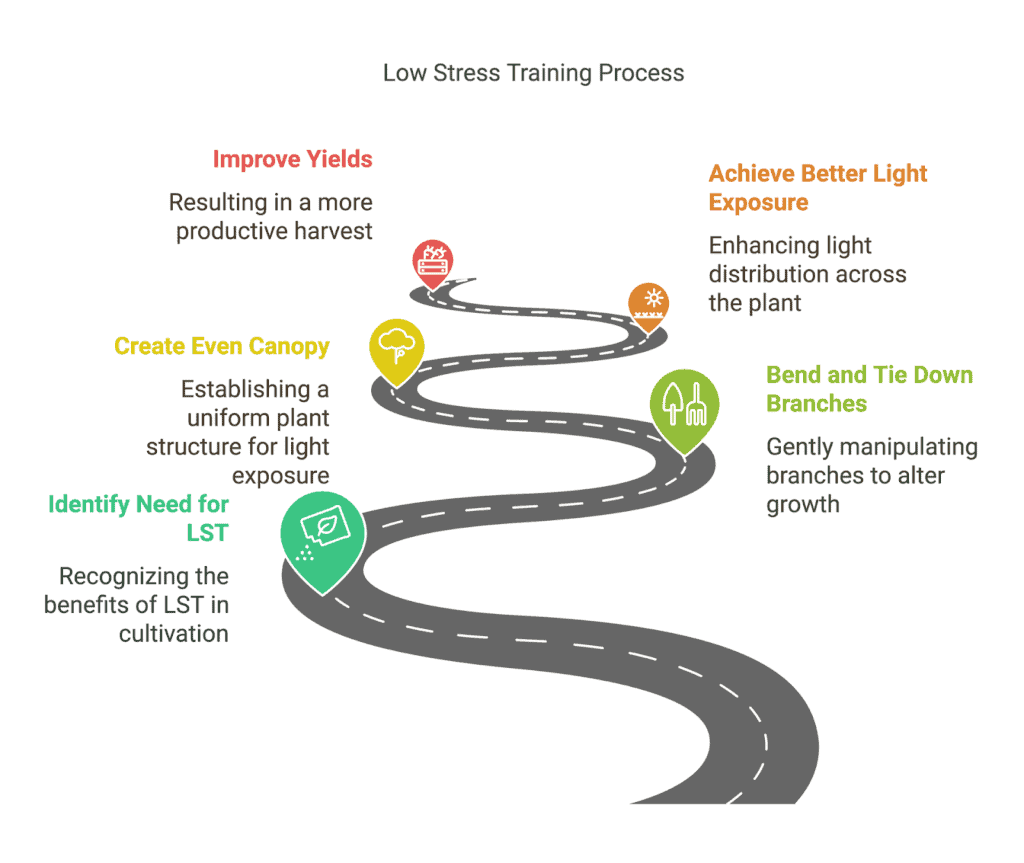
LST is a versatile tool for cannabis growers seeking healthier plants and larger yields. By training your plants carefully, you not only increase productivity but also reduce common growing issues like uneven light exposure and overcrowding.
Advantages of LST
- Boosted Bud Production: More light reaches lower nodes, encouraging bud development.
- Improved Plant Health: The even canopy improves airflow and reduces mold risks.
- Beginner-Friendly: It requires minimal tools and poses less risk than high-stress methods.
LST also complements advanced techniques like the Scrog (Screen of Green) method, where plants are trained horizontally under a screen. This combination further enhances light use and maximizes growing space. The ability to manipulate the plant structure without causing significant stress makes LST a preferred method for many cannabis cultivators.
Comparing LST and High-Stress Training
While high-stress methods can lead to significant yields, they come with a higher risk of plant shock and slower recovery times. LST provides a gentler alternative, ensuring steady growth and faster recovery without compromising plant health. The consistent results achieved with LST make it an attractive option for growers looking to optimize their harvest without introducing unnecessary risks.
Conclusion
Low stress training is an invaluable technique for cannabis growers aiming to improve their harvests. By gently bending and tying down stems, you shape your plants for optimal light exposure, better airflow, and increased yields. Whether you’re growing indoors or outdoors, LST offers a reliable and effective way to enhance your cultivation practices. Start incorporating LST today, and experience the benefits of this low-risk, high-reward method. With practice, you’ll see how this straightforward technique transforms your growing results and the overall health of your plants.
Frequently Asked Questions
What is the best cannabis strain for low stress training?
Certain cannabis strains, such as indica-dominant hybrids, respond exceptionally well to low stress training. These strains are often bushy with strong branches, making them ideal for shaping during the vegetative stage.
How does low-stress train help increase bud production?
Low-stress training redistributes energy throughout the plant by bending and tying down stems. This method exposes more nodes to light, encouraging additional bud sites to form and ultimately increasing your yield.
When should you start low stress training on cannabis plants?
The best time to start LST on your cannabis plants is during the vegetative stage. At this stage, the stems are flexible, making it easier to shape the plant without breaking its branches.
Can LST be used for outdoor cannabis cultivation?
Yes, LST is an excellent training method for outdoor cannabis plants. By shaping the canopy, you can optimize sunlight exposure for all parts of the plant, ensuring even growth and healthier buds.

